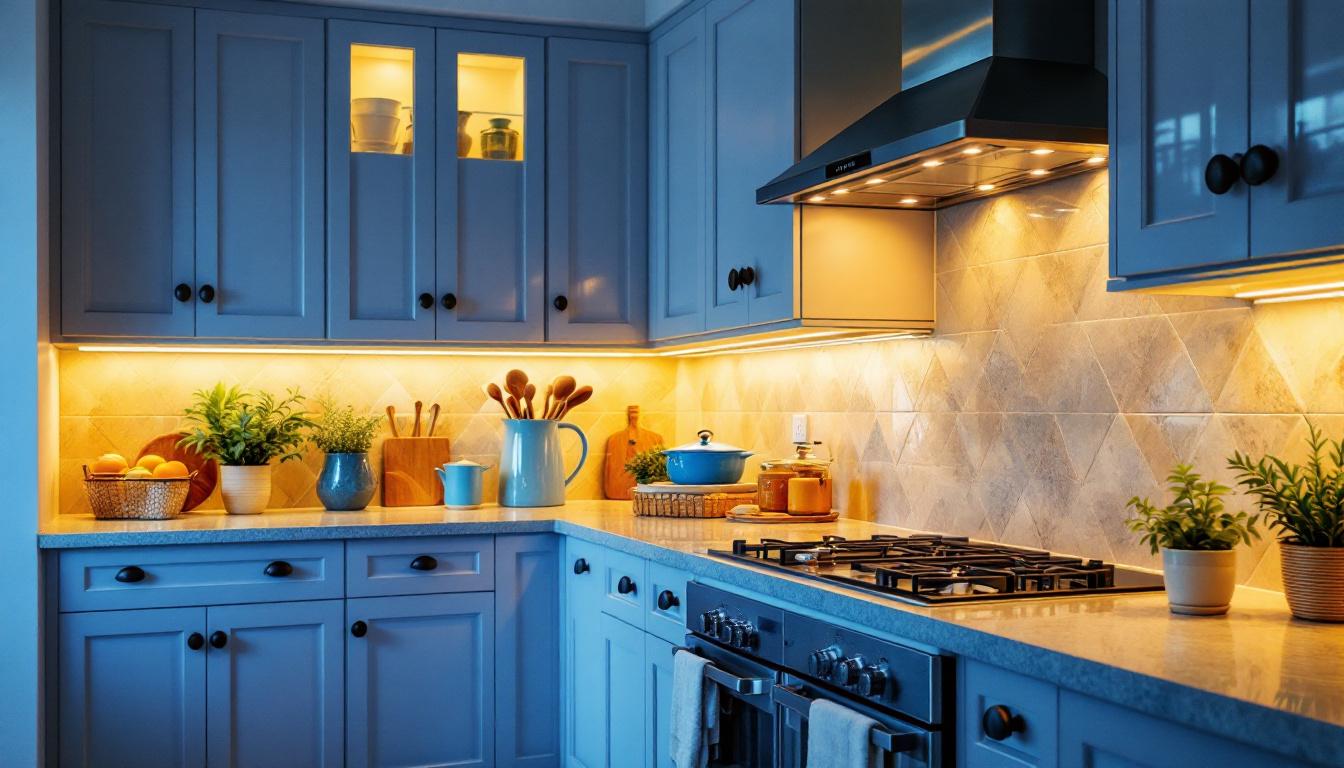
Lighting contractors play a crucial role in the design and installation of lighting systems that enhance both functionality and aesthetics in residential and commercial spaces. However, even seasoned professionals can fall prey to common mistakes that can lead to inefficiencies, safety hazards, and unsatisfactory results. This article aims to shed light on these pitfalls and provide insights into how to avoid them, ensuring that every project is executed with precision and care.
Designing a lighting system is not merely about choosing fixtures and placing them in a space. It requires a comprehensive understanding of the environment, the intended use of the space, and the preferences of the client. A well-thought-out design can significantly enhance the ambiance and functionality of a space, while a poorly executed one can result in frustration and disappointment.
One of the most common mistakes lighting contractors make is failing to engage in thorough consultations with clients. Understanding the client’s vision, preferences, and functional requirements is essential. Without this insight, the final design may not align with the client’s expectations, leading to dissatisfaction.
Moreover, clients often have specific needs based on their lifestyle or business operations. For instance, a restaurant may require different lighting solutions compared to an office space. Engaging clients in the design process fosters collaboration and ensures that the final outcome meets their needs. Additionally, it allows contractors to educate clients about the various lighting options available, helping them make informed decisions that reflect their unique style and requirements. This collaborative approach not only builds trust but also enhances the overall satisfaction with the project.
natural light plays a significant role in how artificial lighting is perceived and utilized. Ignoring the presence and impact of natural light can lead to over-illumination or poorly balanced lighting schemes. Contractors should assess how natural light enters a space throughout the day and how it interacts with artificial lighting.
By considering natural light, contractors can create designs that harmonize with the environment, reducing energy consumption and enhancing the overall aesthetic appeal of the space. For instance, strategically placed skylights or large windows can maximize daylight, creating a warm and inviting atmosphere. Furthermore, the use of light-diffusing materials can help in softening harsh sunlight, making it easier to blend with artificial lighting. This thoughtful integration not only improves the quality of light in the space but also contributes to the well-being of its occupants, as studies have shown that natural light can boost mood and productivity.
The selection of lighting fixtures is a critical aspect of any project. The right fixtures can elevate the design, while the wrong choices can detract from it. However, many contractors make the mistake of prioritizing aesthetics over functionality.
In today’s world, energy efficiency is not just a trend but a necessity. Many contractors still opt for traditional lighting solutions without considering more energy-efficient alternatives. This oversight can lead to increased energy costs for clients and a negative environmental impact.
Contractors should stay informed about the latest advancements in lighting technology, such as LED fixtures, which offer significant energy savings and longer lifespans compared to traditional options. By recommending energy-efficient solutions, contractors can provide added value to their clients and contribute to sustainability efforts. Furthermore, the integration of smart lighting systems can enhance energy efficiency even further. These systems allow users to control their lighting remotely, set schedules, and adjust brightness levels based on the time of day or occupancy, which not only saves energy but also enhances convenience and comfort in any space.
Another frequent mistake is not taking into account the scale and proportions of fixtures in relation to the space. A large chandelier in a small room can overwhelm the space, while tiny fixtures in a vast area can appear insignificant. It is essential to maintain a balance that complements the overall design.
Contractors should visualize how fixtures will look in the context of the space and consider factors such as ceiling height, room dimensions, and furniture layout. This attention to detail can make a significant difference in the final outcome. Additionally, the use of 3D modeling software can aid in visualizing the placement and scale of fixtures before installation. By simulating different lighting scenarios, contractors can experiment with various fixture styles and placements, ensuring that the final design not only looks aesthetically pleasing but also functions effectively within the space. This proactive approach can help avoid costly changes or adjustments after the installation is complete, ultimately leading to a more satisfying experience for both the contractor and the client.
Even the best designs can fall flat if the installation is not executed correctly. Proper installation practices are paramount to achieving the desired lighting effects and ensuring safety.
One of the most critical aspects of lighting installation is adhering to electrical codes and regulations. Contractors who overlook these standards risk not only the safety of the installation but also potential legal repercussions. Compliance ensures that the lighting system operates safely and efficiently.
Contractors should stay updated on local electrical codes and regulations, ensuring that all installations meet the necessary requirements. This diligence protects both the contractor and the client from future complications.
Fixture placement is a crucial element of effective lighting design. Poorly placed fixtures can create shadows, glare, or uneven lighting, detracting from the intended effect. Contractors must carefully plan the positioning of fixtures to achieve optimal illumination.
Utilizing lighting design software or conducting mock-ups can help visualize how light will interact within the space. This proactive approach allows for adjustments before the final installation, ensuring a more successful outcome.
Once the installation is complete, the work is not finished. There are several common mistakes that contractors should avoid during the post-installation phase to ensure client satisfaction and system longevity.
After installation, it is essential to test the lighting system thoroughly. Many contractors skip this step or conduct minimal testing, leading to unresolved issues. Proper testing allows contractors to identify any problems, such as flickering lights or incorrect color temperatures, and address them before handing over the project to the client.
Adjustments may also be necessary to achieve the desired ambiance. Lighting can look different once installed compared to how it appeared in the design phase. Taking the time to fine-tune the settings can greatly enhance the overall effect.
Clients often appreciate guidance on how to maintain their lighting systems for optimal performance. Contractors who neglect to provide this information may leave clients struggling with maintenance issues down the line. Offering tips on bulb replacement, cleaning fixtures, and troubleshooting common problems can foster a positive relationship with clients.
Additionally, providing a maintenance schedule can help clients prolong the life of their lighting systems and ensure they continue to function as intended.
effective communication is vital throughout the entire process, from initial consultations to post-installation follow-ups. Many contractors underestimate the importance of clear communication and thorough documentation.
Proper documentation of project details, including design specifications, fixture selections, and installation procedures, is essential. This documentation serves as a reference for both the contractor and the client, helping to avoid misunderstandings and ensuring that everyone is on the same page.
Moreover, having a well-documented project can be invaluable for future maintenance or upgrades. It provides a comprehensive overview of the system, making it easier to address any issues that may arise later.
Maintaining open lines of communication with clients throughout the project is crucial. Contractors should establish a point of contact and encourage clients to ask questions or express concerns at any stage. This proactive approach can help build trust and ensure that clients feel valued and informed.
Regular updates on project progress and any changes can also prevent misunderstandings and foster a collaborative atmosphere.
The lighting industry is constantly evolving, with new technologies and design trends emerging regularly. Contractors who fail to stay informed risk falling behind their competitors and providing outdated solutions to clients.
Continuous education is essential for lighting contractors to stay current with industry advancements. Attending workshops, seminars, and trade shows can provide valuable insights into new products, technologies, and design techniques.
Additionally, joining professional organizations and networking with peers can foster collaboration and knowledge sharing. Staying engaged with the industry can lead to innovative solutions and improved service offerings.
Technology plays a significant role in modern lighting design and installation. Contractors who embrace tools such as lighting design software, energy modeling programs, and smart lighting solutions can enhance their efficiency and creativity.
By integrating technology into their workflow, contractors can offer clients more sophisticated solutions that meet their evolving needs and preferences.
Lighting contractors have the opportunity to create stunning and functional spaces through their expertise. However, avoiding common mistakes is essential to ensure successful outcomes and satisfied clients. By engaging in thorough consultations, selecting the right fixtures, adhering to installation standards, and maintaining effective communication, contractors can elevate their projects to new heights.
Staying informed about industry trends and embracing technology will further enhance the quality of service provided. Ultimately, the key to success lies in a commitment to excellence and a dedication to continuous improvement in the ever-evolving world of lighting design.
Ready to avoid the common pitfalls and elevate your lighting projects? At LumenWholesale, we provide lighting contractors with the resources they need to succeed. Our spec-grade lighting products combine quality and affordability, ensuring you can deliver exceptional results to your clients every time. Say goodbye to inflated markups and hello to our vast selection of reliable, high-performance lighting options. Plus, with free shipping on bulk orders, you can get the best value without any hidden fees. Don’t compromise on quality or cost. Wholesale Lighting at the Best Value is just a click away. Choose LumenWholesale for your next project and experience the difference.

Discover the essentials of installing flashing under cabinet lights with our comprehensive guide tailored for lighting contractors.

Discover the crucial role undercabinet lights play in modern kitchen design and why lighting contractors should prioritize them.

Discover essential insights into 4-foot LED lights tailored for lighting contractors.

Discover essential insights and expert tips tailored for lighting contractors in this comprehensive guide on electrical tools.